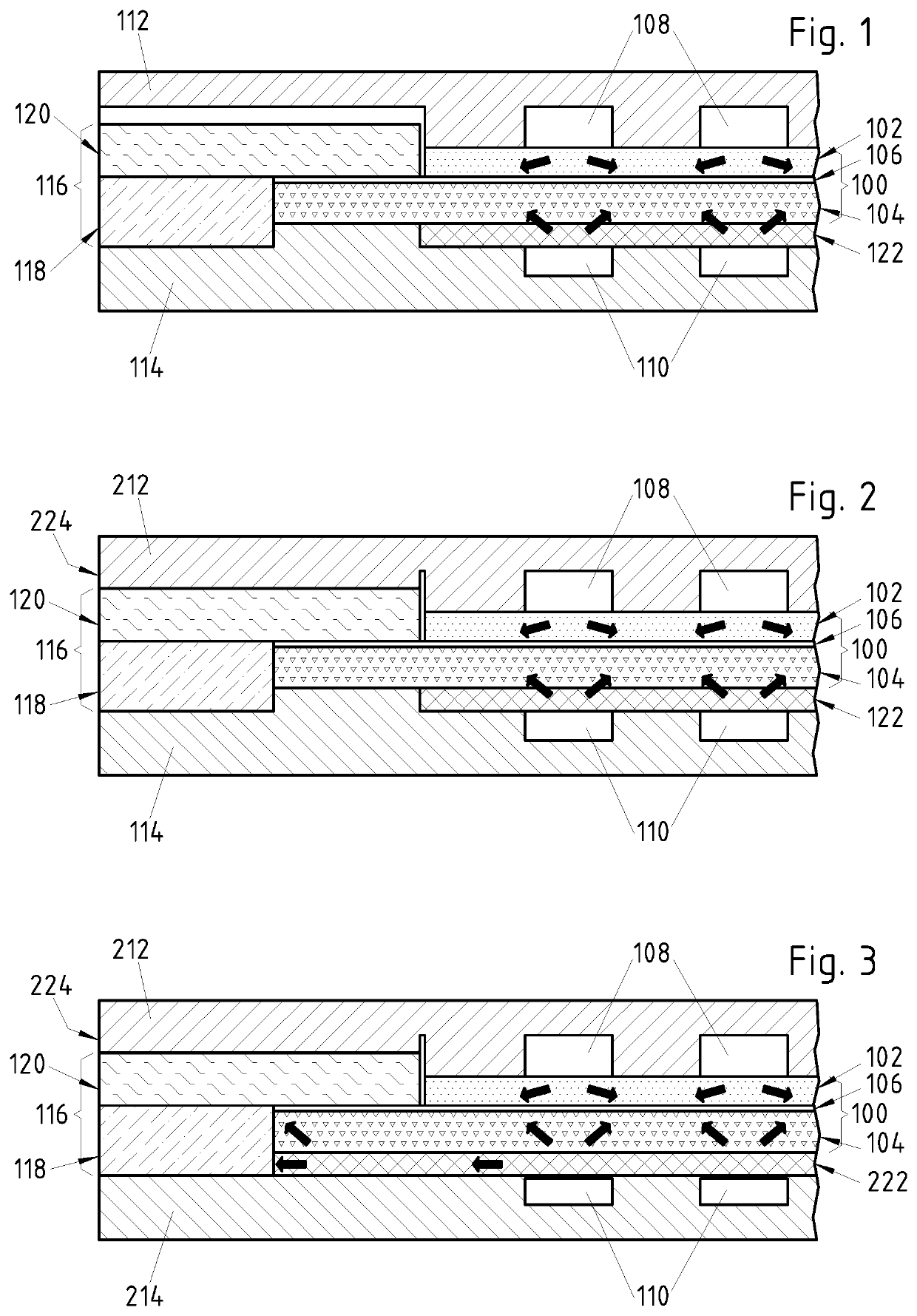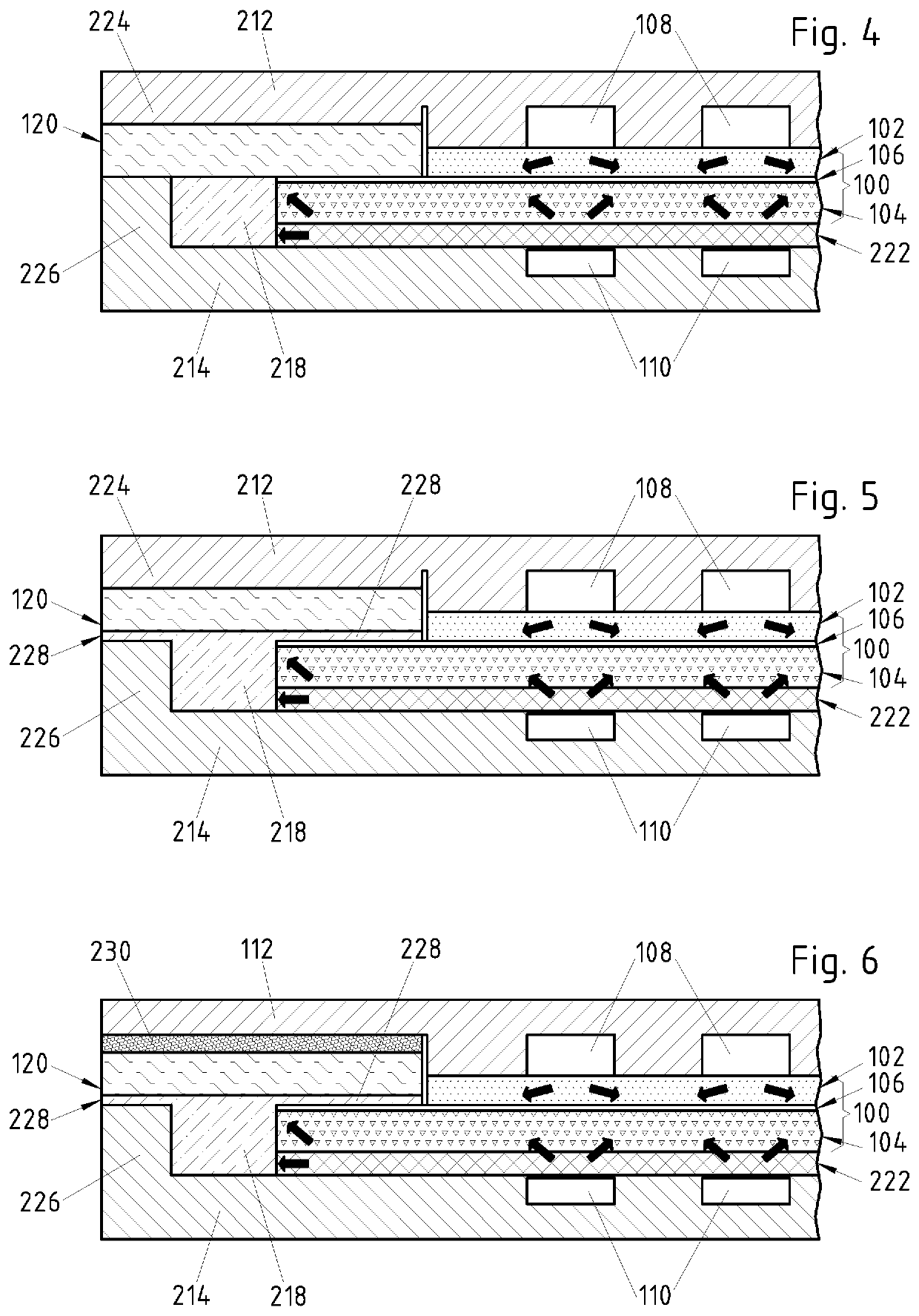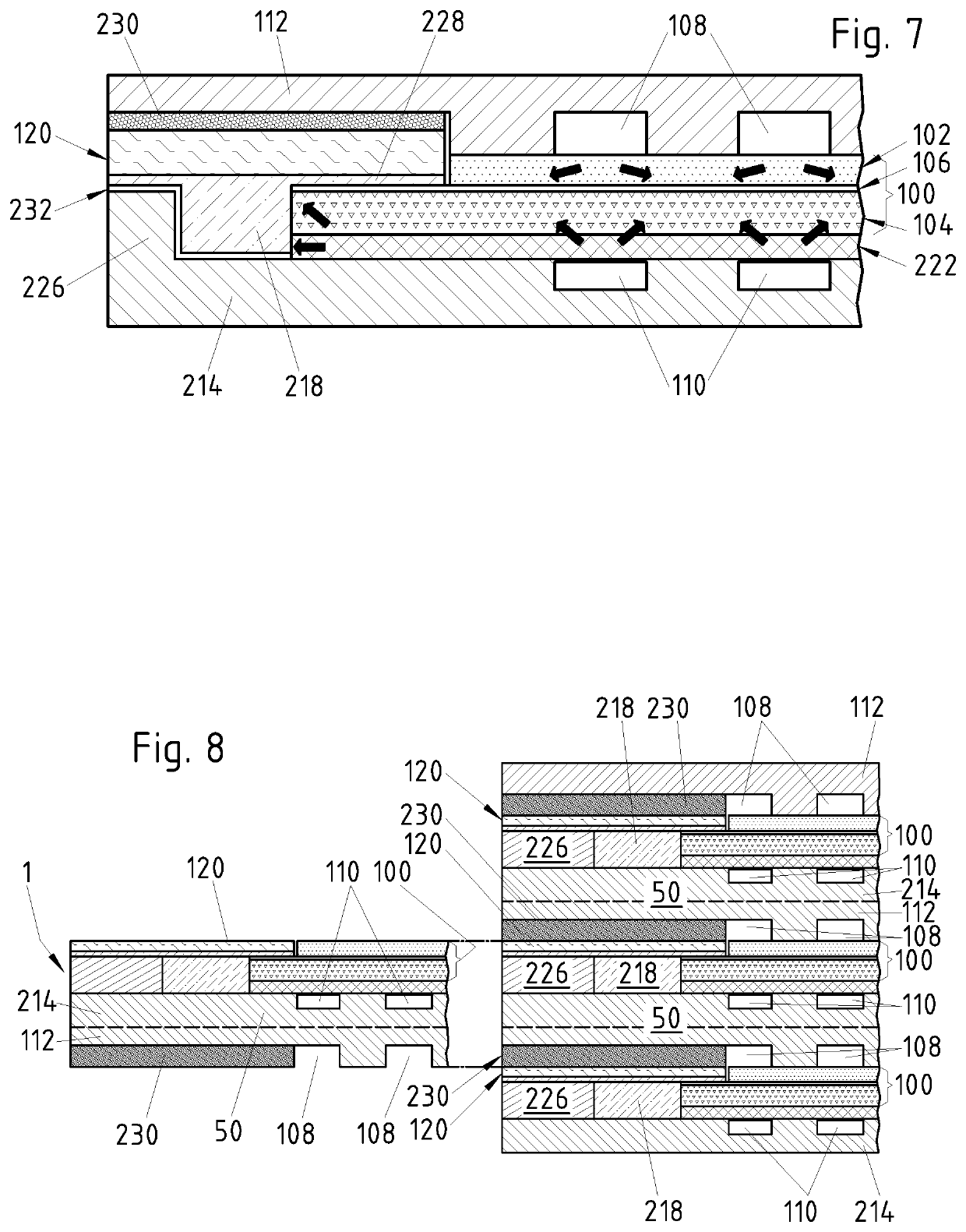Hybrid seal and planar arrangement comprising at least one high temperature electrochemical cell and a hybrid seal
a high temperature electrochemical cell and hybrid seal technology, which is applied in the direction of fuel cell details, electrolysis components, electrochemical generators, etc., can solve the problems of air or gas in the flow field for oxidizing gas contamination by chemicals, shear or tensile stress, etc., and achieve low shear and tensile strength, simplify the job, and reduce the effect of oxidizing gas contamination
- Summary
- Abstract
- Description
- Claims
- Application Information
AI Technical Summary
Benefits of technology
Problems solved by technology
Method used
Image
Examples
seventh embodiment
[0045]The planar arrangements forming the stack shown in FIG. 8 correspond to the same seventh embodiment also shown in FIG. 7. It should be understood however that any embodiment of the invention can be adapted to form the stacking units of a stack. Conversely, the high temperature planar electrochemical cell of any one of the planar arrangements illustrated in FIGS. 1 to 7 can also function on its own as an individual electrochemical reactor. In this second case, the two interconnects both belong to the one and only SOFC. In this second case, an essential role played by the interconnects is that of current collectors.
[0046]Now referring to FIG. 1 in particular, it can be observed that a contacting layer 122 is intercalated between the anode 104 and the surface of the second interconnect 114. The contacting layer 122 can be implemented for instance in the form of a layer of metal mesh that is arranged so as to cover the surface of the interconnect at least in the electrochemically ...
first embodiment
[0050]FIG. 1 further shows that, in this first embodiment, the glass layer 118 is formed over the periphery of the inner (or upper) surface of the second interconnect 114, and that it is arranged alongside the edge of the solid electrolyte layer 106, adjacent to it. It can further be observed in FIG. 1 that the top surface of the glass layer 118 is substantially flush with the top surface of the solid electrolyte layer 106, and that the mica sheet 120 that covers the glass layer also covers the peripheral part of the solid electrolyte layer. Furthermore, the mica sheet borders the edge of the cathode layer 102, in such a way as to substantially surround the cathode electrode. One advantage of the arrangement that has just been described is that the presence of the mica sheet helps to keep the oxidizing gas away from the glass component 118, and significantly limits the number of oxidizing gas molecules that can reach the glass component and diffuse into it.
[0051]Still referring to F...
fourth embodiment
[0055]An advantage of the protruding part 226 of the present example is that it can constrain the glass component 218 during curing. In other words, it serves as a barrier to prevent the glass from flowing out when the viscosity of the glass component is low. Another advantage is that the protruding part 226 can itself improve the sealing functionality by operating as an additional barrier against gas flow. Furthermore, according to a preferred variant of the fourth embodiment, the top surface of the protruding part 226 is located in the same plane as the top surface of the solid electrolyte 106, and the mica sheet 120 also covers the protruding part. In this way, the protruding part can provide additional mechanical support for the mica sheet 120. An advantage of this arrangement is that it reduces to a minimum the stress and the strain on the mica sheet.
[0056]It should be understood however that, according to possible alternative embodiments (not shown), the upper surface of the s...
PUM
| Property | Measurement | Unit |
|---|---|---|
| temperature | aaaaa | aaaaa |
| temperatures | aaaaa | aaaaa |
| temperature | aaaaa | aaaaa |
Abstract
Description
Claims
Application Information
 Login to View More
Login to View More - R&D
- Intellectual Property
- Life Sciences
- Materials
- Tech Scout
- Unparalleled Data Quality
- Higher Quality Content
- 60% Fewer Hallucinations
Browse by: Latest US Patents, China's latest patents, Technical Efficacy Thesaurus, Application Domain, Technology Topic, Popular Technical Reports.
© 2025 PatSnap. All rights reserved.Legal|Privacy policy|Modern Slavery Act Transparency Statement|Sitemap|About US| Contact US: help@patsnap.com



